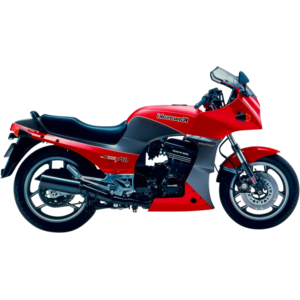Kawasaki GPZ 900 R Ninja (1991–1998): A Timeless Sport-Touring Icon Revisited
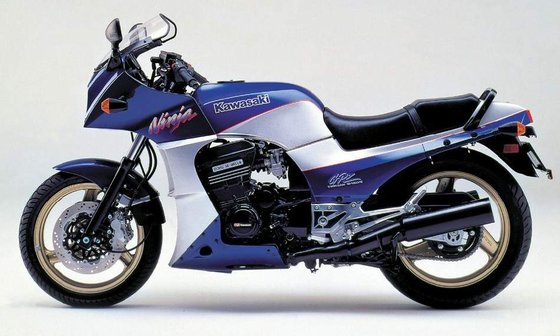
Introduction
When Kawasaki unleashed the GPZ 900 R Ninja in 1984, it redefined performance motorcycles. By the time the 1991–1998 generation arrived, this legend had already cemented its place in motorcycling history. While newer models have since grabbed headlines, the GPZ 900 R remains a benchmark for balancing raw power, touring comfort, and mechanical reliability. Climbing onto this Ninja today feels like shaking hands with an old friend—one who hasn’t lost their edge. Let’s dive into what makes this generation a standout, even decades later.
Design & Styling: Function Over Flair
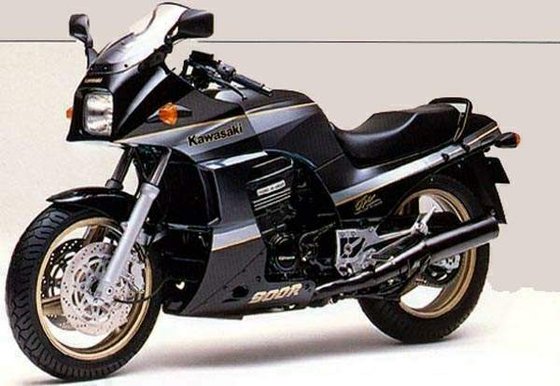
The GPZ 900 R’s design is a study in purposeful minimalism. Unlike today’s aggressively angular sportbikes, the Ninja opts for a sleek, wind-tunnel-tested fairing that still looks cohesive. The 1990s updates brought subtle tweaks: a larger 17-inch front wheel (up from 16 inches), wider tires (120/80-16 front, 130/80-18 rear), and a muted color palette of blacks and greys that aged better than the ’80s neon schemes.
The cockpit is straightforward, with analog gauges lifted from the ZX-10—a speedometer, tachometer, and basic warning lights. The fairing’s reach is just enough to deflect wind without feeling claustrophobic, and the dual headlights provide adequate illumination for night rides. While the styling won’t turn heads like a Ducati 916, it’s a testament to timeless function.
Engine & Performance: The Heart of a Revolution
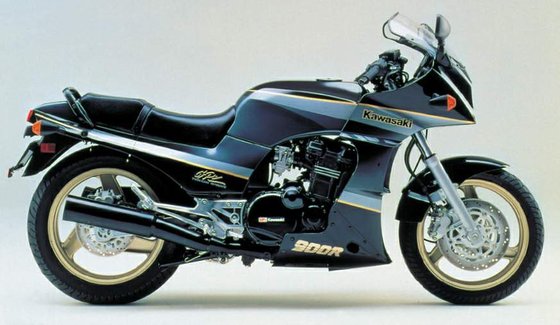
At its core lies the 908cc liquid-cooled inline-four, a marvel of engineering that debuted in 1984. With DOHC, 16 valves, and a 11.0:1 compression ratio, this engine churns out 115 HP (86 kW) at 9,500 RPM and 62.9 lb-ft (85 Nm) of torque at 8,500 RPM—numbers that still hold up against modern middleweights.
Riding the Powerband
Twist the throttle, and the Ninja awakens with a metallic snarl. Below 4,000 RPM, it’s docile, even hesitant—a holdover from its race-bred DNA. But cross 7,000 RPM, and the engine transforms. The midrange surge pins you to the tank, and the exhaust note sharpens into a high-pitched wail. By 9,500 RPM, you’re hurtling toward a top speed of 155 mph (250 km/h), with the quarter-mile disappearing in 11.3 seconds.
The six-speed gearbox is a highlight. Shifts are precise, and the close ratios keep the engine in its sweet spot. Vibrations creep in above 6,000 RPM, tingling through the seat and pegs, but it’s a small price for the adrenaline rush.
Handling & Ride Quality: Confidence in the Corners
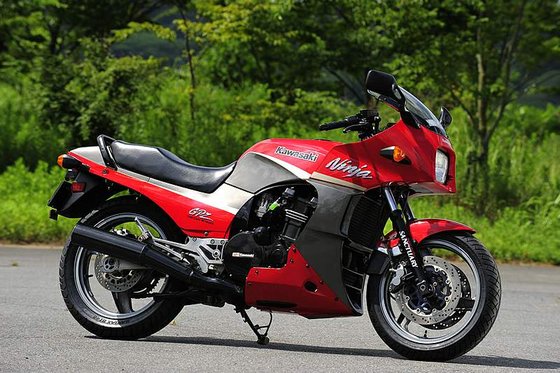
Kawasaki’s double-cradle steel frame strikes a balance between rigidity and flexibility. Paired with 41mm telescopic forks (upgraded from 38mm in earlier models) and a Uni-Trak rear suspension, the Ninja feels planted yet forgiving. The anti-dive system, once a hallmark of ’80s tech, was wisely discarded for simpler, more predictable front-end behavior.
The steering is neutral, with a 29-degree rake and 3.5-inch (91mm) trail making it stable at speed without sacrificing agility. Push hard into a corner, and the chassis communicates clearly, even if the bias-belted Dunlops (120/80-16 front, 130/80-18 rear) lack the grip of modern radials.
Braking duties fall to dual 300mm front discs with four-piston calipers and a single 250mm rear disc. While not as sharp as today’s radial setups, they offer progressive bite and enough power to rein in the 566 lb (257 kg) wet weight.
Comfort & Ergonomics: The Sport-Touring Sweet Spot
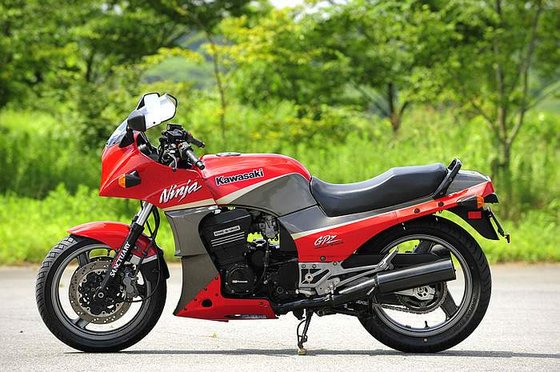
The GPZ 900 R’s riding position is a masterclass in balance. The clip-ons are low enough for spirited riding but not so extreme that they strain your wrists. The seat, at 31.1 inches (790mm), is accessible for shorter riders, and the plush padding forgives hours in the saddle.
The fairing directs wind over your shoulders, and the 5.8-gallon (22L) tank ensures fewer fuel stops. Two-up touring is feasible, though the rear seat is best suited for shorter jaunts.
Competition: How the Ninja Stacks Up
In the ’90s, the GPZ 900 R faced fierce rivals:
- Honda CBR900RR Fireblade (1992–1999): Lighter (463 lb vs. 566 lb) and sharper, the Fireblade dominated twisties but lacked the Ninja’s touring comfort.
- Yamaha FZR1000 (1987–1995): With 135 HP, the FZR outpaced the Kawasaki but felt bulkier and less refined at low speeds.
- Suzuki GSX-R1100 (1986–1998): A dragstrip king with brute power, but its harsh ride and thirsty engine made it less practical for distance.
The Ninja’s ace was versatility. It couldn’t outgun the GSX-R or out-flick the Fireblade, but as a mile-eating sport-tourer, it was unmatched.
Maintenance: Keeping the Legend Alive
The GPZ 900 R’s reliability is legendary, but age demands diligence:
- Valve Adjustments: Every 16,000 miles (26,000 km). The screw-and-locknut tappets are durable but require precise clearance checks (0.13–0.18mm intake, 0.18–0.23mm exhaust).
- Carburetor TLC: The Keihin CVK34 carbs are robust but prone to icing in cold humidity. A carb heater kit (available at MOTOPARTS.store) solves this.
- Cooling System: Flush coolant every two years and inspect the radiator for debris.
- Brake Upgrades: Swap factory pads for sintered alternatives for improved bite.
- Chain & Sprockets: The 112-link chain wears evenly if kept clean and lubed. Replace sprockets in sets (17T front/48T rear).
MOTOPARTS.store Recommendations:
- High-flow air filters for crisper throttle response.
- Aftermarket exhaust systems to shed weight and amplify that iconic inline-four howl.
- Upgraded suspension springs for riders craving modern damping.
Conclusion: Why the GPZ 900 R Still Matters
The 1991–1998 Kawasaki GPZ 900 R Ninja isn’t just a relic—it’s a reminder of how good motorcycling felt before electronics took the wheel. It’s raw yet refined, fast yet forgiving, and built to outlast its owner. Whether you’re chasing sunset horizons or reliving the ’90s glory days, this Ninja delivers. And when it’s time for upgrades, MOTOPARTS.store has the parts to keep your legend roaring.
Ride hard. Ride far. Ride timeless.
Specifications sheet
| Engine | |
|---|---|
| Stroke: | Four-stroke |
| Max power: | 80.5 kW | 108.0 hp |
| Max torque: | 85.3 Nm |
| Fuel system: | 4x 34mm Keihin CVK34 carburetors |
| Max power @: | 9500 rpm |
| Displacement: | 908 ccm |
| Max torque @: | 8500 rpm |
| Bore x stroke: | 72.5 x 55 mm (2.9 x 2.2 in) |
| Configuration: | Inline |
| Cooling system: | Liquid |
| Compression ratio: | 11.0:1 |
| Number of cylinders: | 4 |
| Valves per cylinder: | 4 |
| Dimensions | |
|---|---|
| Wheelbase: | 1425 mm (56.1 in) |
| Dry weight: | 228 |
| Wet weight: | 257 |
| Seat height: | 790 mm (31.1 in) |
| Overall width: | N/A |
| Overall height: | N/A |
| Overall length: | N/A |
| Ground clearance: | N/A |
| Fuel tank capacity: | 22 L (5.8 US gal) |
| Drivetrain | |
|---|---|
| Final drive: | chain |
| Chain length: | 112 |
| Transmission: | 6-speed |
| Rear sprocket: | 48 |
| Front sprocket: | 17 |
| Maintenance | |
|---|---|
| Rear tire: | 150/70-18 |
| Engine oil: | 10W40 |
| Front tire: | 120/70-17 |
| Brake fluid: | DOT 4 |
| Spark plugs: | NGK DR8ES or NGK DR8EIX |
| Spark plug gap: | 0.7 |
| Coolant capacity: | 2.9 |
| Forks oil capacity: | SAE 10W (quantity unspecified) |
| Engine oil capacity: | 3.0 |
| Engine oil change interval: | Every 5000 km or 2 years (whichever comes first) |
| Valve clearance (intake, cold): | 0.13–0.18 mm |
| Valve clearance (exhaust, cold): | 0.18–0.23 mm |
| Recommended tire pressure (rear): | 2.5 bar (36 psi) solo / 2.9 bar (42 psi) with passenger |
| Recommended tire pressure (front): | 2.2 bar (32 psi) |
| Chassis and Suspension | |
|---|---|
| Frame: | Steel backbone with aluminum subframe |
| Rear brakes: | Single 250mm disc, 2-piston caliper |
| Front brakes: | 2x 300mm discs, 4-piston calipers |
| Rear suspension: | Uni-Trak air-assisted monoshock, 4-way adjustable damping |
| Front suspension: | 41mm telescopic forks, air-assisted |
| Rear wheel travel: | N/A |
| Front wheel travel: | N/A |



